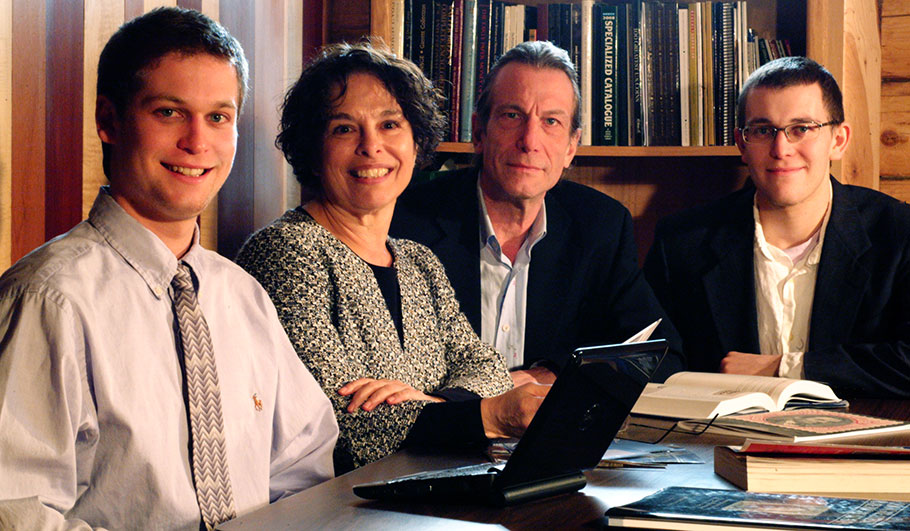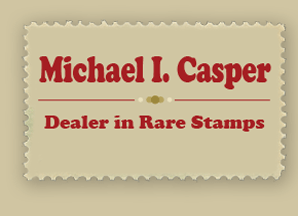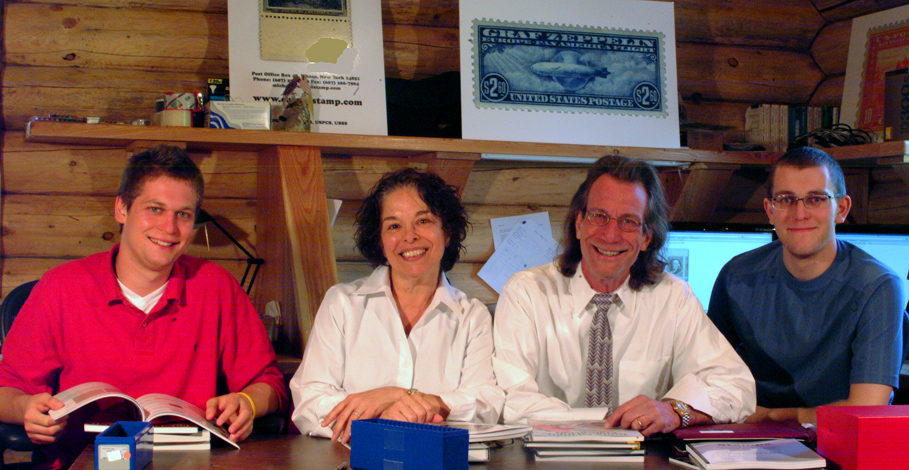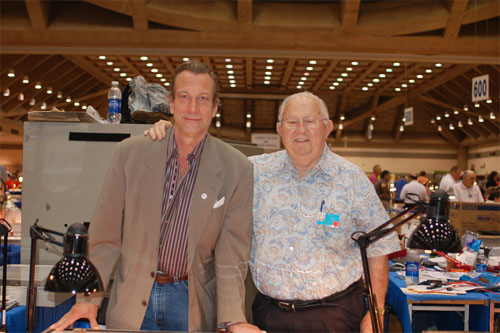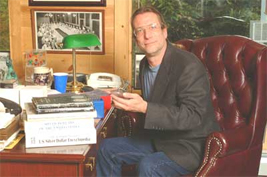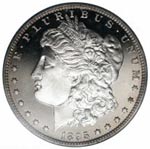
By Geg
Clark
Staff Writer
posted: 11:00 am ET
Michael Casper's entrance into the field of meteorite dealing was,
in a word, meteoric.
Six years ago he didn't know there was a market for rocks from space.
Now he operates one of the biggest space rock dealerships in the world
in Ithaca, New York. By his count, he sells more than $1 million worth
of meteorites a year through mail order, at gem and mineral shows and
on the Internet.
Casper was an aggravated restaurateur when an advertisement changed
his life.
"I was thumbing through a magazine and I saw an ad of Robert Haag's:
'meteorites for sale,' " Casper recalled. The small promotion surprised
him because he thought the handful of meteorites in the world were all
at the Hayden Planetarium in New York, where he had seen them as a boy.
"I said to myself 'Wow, I can own a meteorite?' and I went out
and bought a few."
After that Casper just wanted more.
Running the restaurant that Casper owned with his wife had become a
nightmare. The couple bought the restaurant thinking it would be a pleasant
way to work for themselves. But the clientele at the eatery, which was
adjacent to Cornell University, was "abusive, hard-to-please college
kids," Casper said. He hated the place. So when meteorites burned
into Casper's consciousness, he saw opportunity, and he leapt.
"I took all the money we had out of the bank and out of the cash
register and bought as many meteorites as I could. And I sold them all,
and then took out a loan and bought a bunch more."
His wife thought he had lost his mind, Casper said, but it was too
late. "I just did it. I was on fire, I was lit up. Nothing could
stop me."
And for the past five years, nothing has.
Casper trades, buys and sells everything -- from rare specimens of
crucial scientific value to commonplace stony meteorites that simply
have novelty interest. He recently engineered the purchase of the new
Martian meteorite, LA 001, which turned up last fall. Casper teamed
up with New York City meteorite dealer Darryl Pitt to buy the meteorite
and distribute it to various museum and research collections around
the world. By trading samples of Mars rock for meteorites that have
already been thoroughly studied, Casper was able to secure valuable
specimens he could sell, while ensuring that the rare LA 001 was available
to scientists.
The most popular meteorites lately have been pieces of Sikhote-Alin,
the iron meteorite that exploded above eastern Siberia in 1947. Small
pieces, the size that would fit in your palm, sell for $50 to $100.
But larger samples, pieces with exotic shapes fitting to be displayed
as sculpture can sell for that much per gram. (One ounce is equivalent
to 28 grams.)

This iron meteorite from Casper's catalog is one of the countless fragments
from the Sikhote-Alin meteorite, which exploded above eastern Siberia
in 1947. More than 25 tons of material -- less than one third of the
estimated original mass -- has been recovered from the area of wilderness
where the meteorite fell.
"I have one that weighs about a pound with a hole in it, which
I paid over $10,000 for," Casper said. That was a bargain at just
$22 per gram.
Prices vary tremendously based on the demand for various types of meteorites.
The most common stony meteorites sell for just a few dollars per gram,
while prices for very rare meteorites, such as pieces of the moon or
Mars, or especially beautiful meteorites can reach hundreds of dollars
per gram.
Unlike most meteorite dealers -- who buy and sell in order to expand
their personal collection -- for Casper it is all about commerce. Except
for the rare pieces that are so important that they need to be saved
for scientific research, everything he has is for sale,
Casper's business practices occasionally irritate other meteorite dealers.
He is willing to sell large pieces at prices well below the prevailing
market value for that particular meteorite.
He did that recently with a rare and exotic type of meteorite called
diogenite, much to the irritation of other dealers who were holding
large amounts of the rare type and seeking a price between $40 and $60
per gram.
With one sale of several pounds of diogenite at a price that some report
to be about half the market value, Casper single-handedly cut the world
price of diogenite meteorites, critics say.
"It just goes to show you, if you think you got it all, you better
do some research," said stalwart meteorite dealer Robert Haag.
Haag is one of the few dealers who have been buying and selling meteorites
for more than 20 years.
The people who were stung when Casper undercut the market were those
who misjudged the availability of diogenite in light of several recent
finds, Haag said.
"The guys that held it too long blew it. They blew it," he
said. "Because one guy had 7 kilos stashed away in Belgium, and
he didn't want anybody to know about it. But in the meantime another
25 kilos has been pieced out and distributed."
It led to a price war that ended with a buyer's market for diogenite,
Haag said. It could ultimately help everybody who wasn't left holding
a box of it.
For Casper it was just good business: buy low, and unload fast for
a profit. To a large degree, the meteorite market is a speculator's
business, a fact that other dealers acknowledge is just a part of life
in the meteorite trade. You can't count on the fact that any price will
be kept artificially high to protect other trader's investments.
